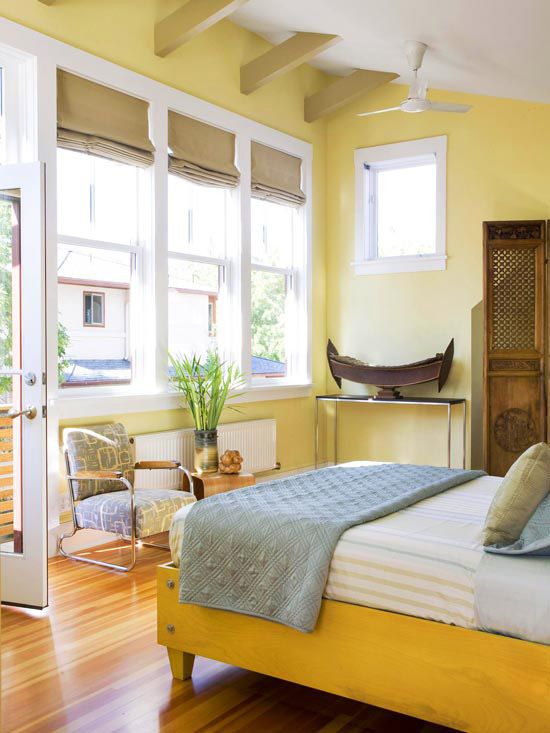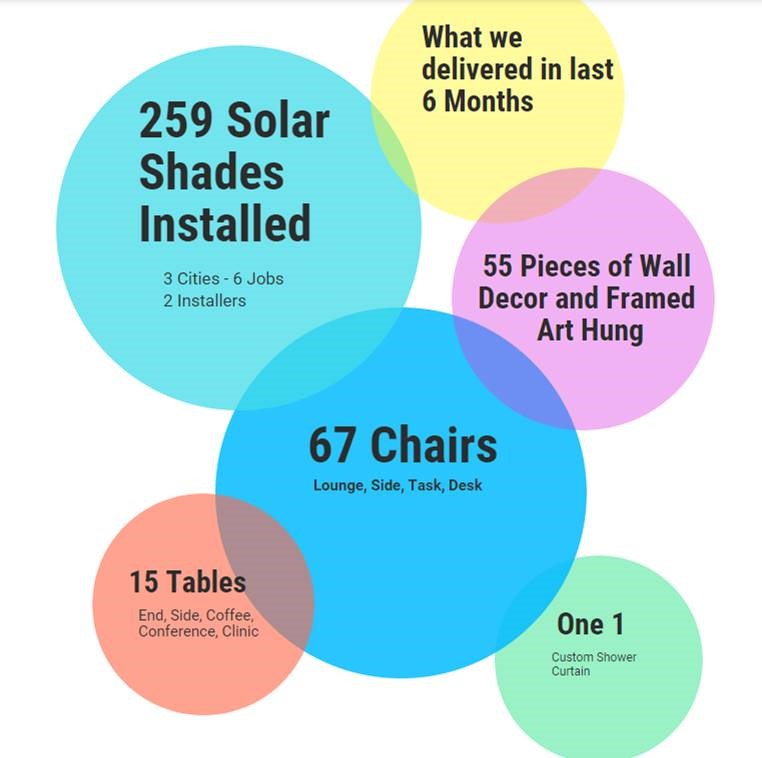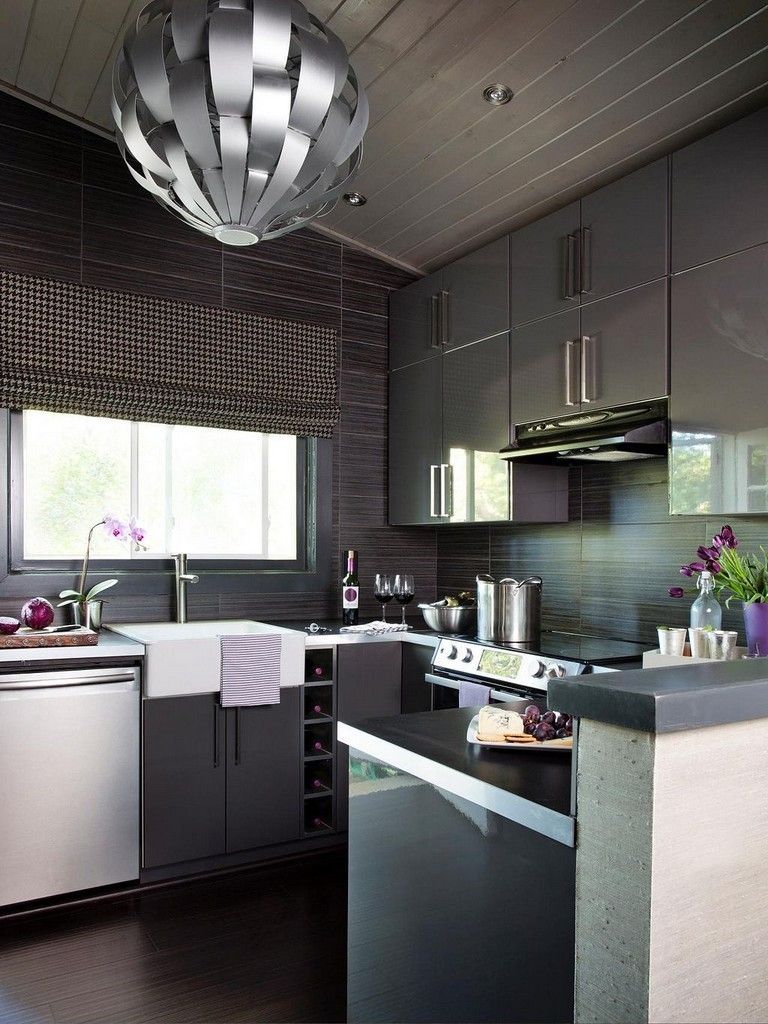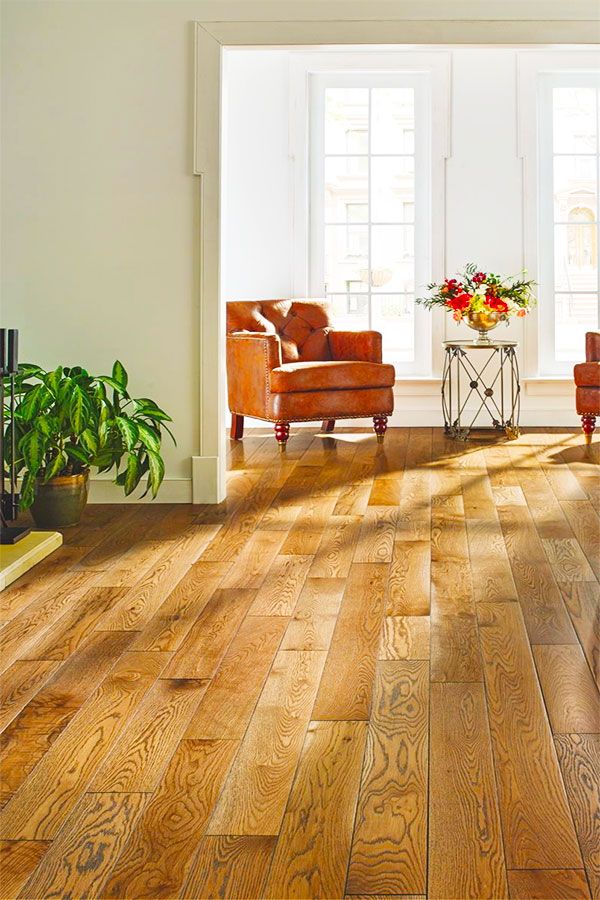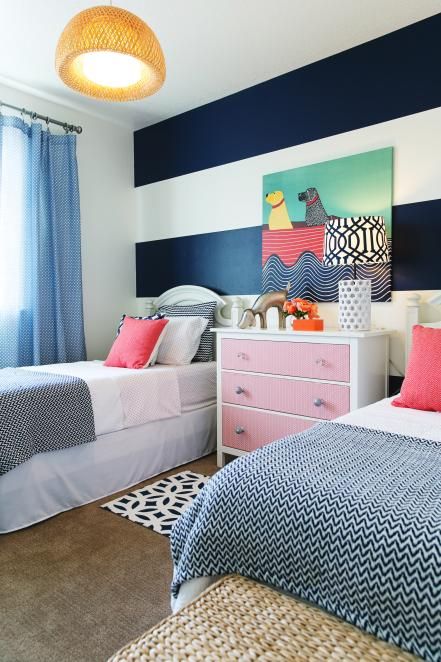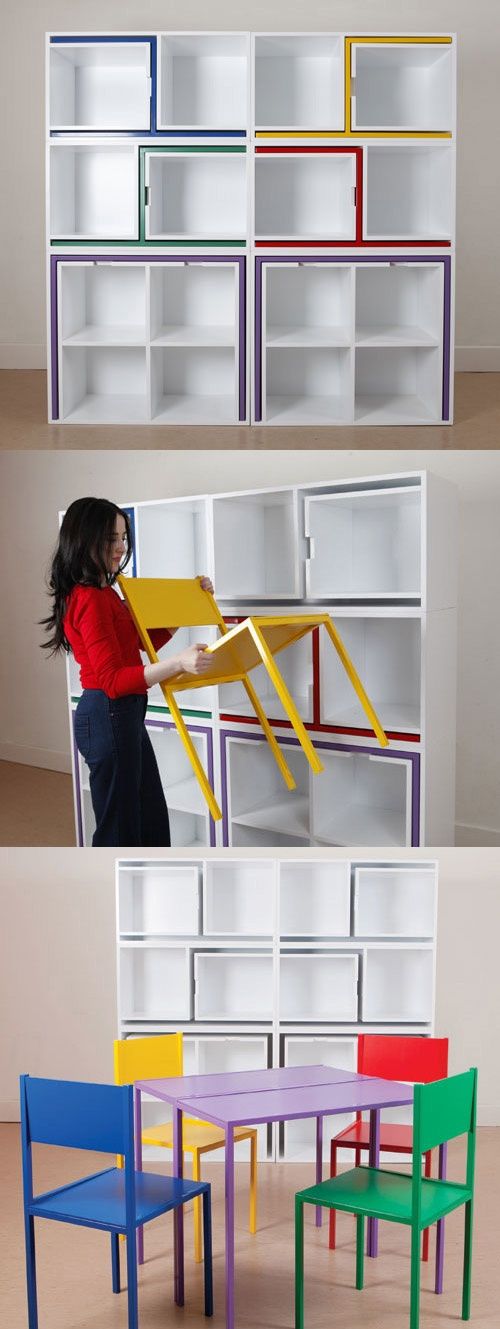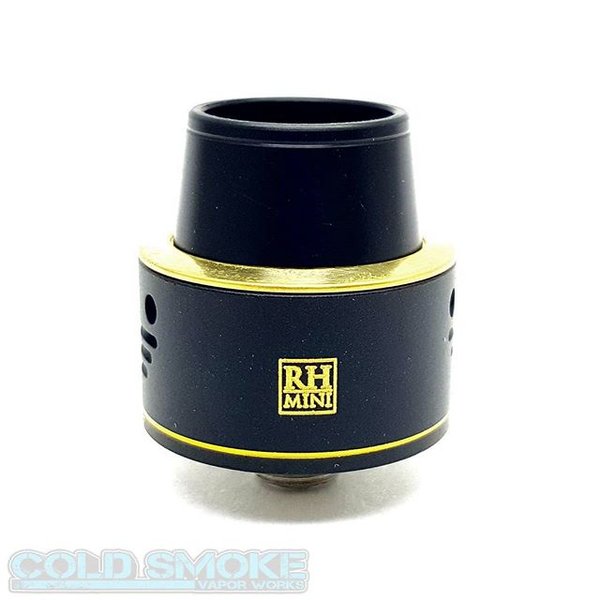Oak flooring for bathrooms
Using Hardwood Flooring in a Bathroom: What You Should Know
Hardwood flooring is a popular surface covering material that has been used in a variety of interior spaces since the dawn of modern construction. It is durable, low maintenance, long-lasting, and has a beautiful natural look that is prized by many homeowners. However, it does have issues when used in moist or humid environments, such as bathrooms. While certain types of hardwood flooring can be successful in bathroom use, wood in the bathroom will require a higher level of maintenance than in other places.
Advantages of Hardwood in a Bathroom
Despite some drawbacks, there are distinct aesthetic advantages to using hardwood flooring in a bathroom.
Warmth
One of the biggest drawbacks to ceramic tile is that it is quite chilly, especially in the winter. Since the bathroom is a space where you will often go barefoot, this can be an issue. Hardwood floors give the room a much warmer, more comforting feel underfoot. The earth tone colors also tend to make the entire room seem more inviting and welcoming.
Beauty
The biggest advantage of hardwood is that it can be really beautiful. It lends a sense of natural wonder to spaces while also providing a unique appeal—every plank is a piece of natural artwork with its individual grain pattern. Hardwood is a classic choice that has transcended centuries of style and it isn't subject to the whims and vogues of interior design. A bathroom floored with hardwood will draw attention as an elegant space. It can also offer design continuity between rooms.
Longevity
Properly maintained, a solid hardwood floor is a very durable, long-lived flooring material. Lifespans of 25 years or more are common, making hardwood flooring one of the most durable flooring options available along with stone or ceramic tile. When hardwood does become scratched, it can be sanded and refinished to renew the surface. Engineered hardwood flooring, made of a hardwood surface layer laminated to core layers, is somewhat less durable, but it can still be a long-lasting floor when properly maintained.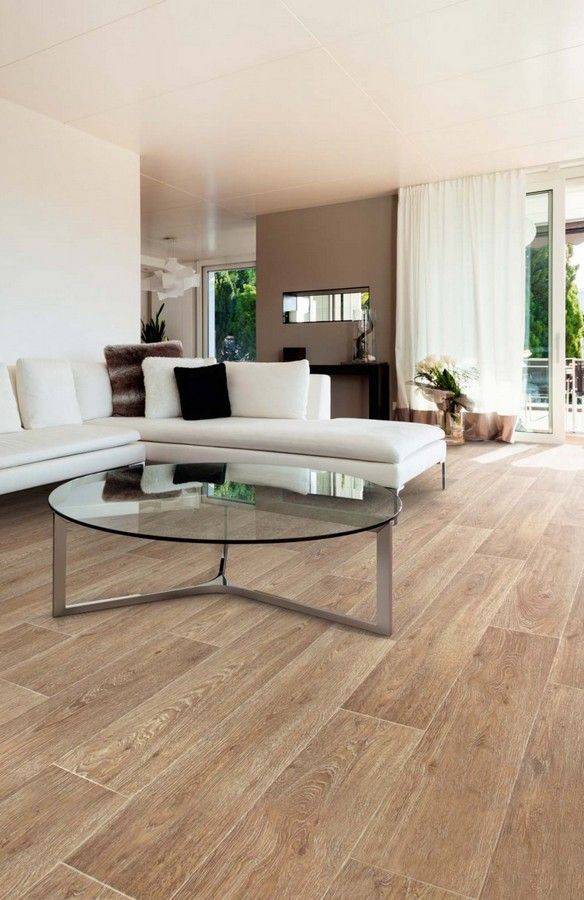
Dangers to Hardwood Flooring In a Bathroom
The issues affecting hardwood flooring in a bathroom all involve the way that moisture can affect the material.
Spills and Splashes
This is going to be the first concern of any flooring installed in a bathroom. Showers and baths naturally tend to cause splashes. Even just rinsing your face in the sink can send droplets of water spilling out across the floor, and a bathroom with a shower or tub is almost certain to see water on the floor occasionally—especially a bathroom used by children. While the finish will protect the material to some extent, you still need to wipe up any spills immediately so that the moisture doesn’t wear away at the material's protective layer or seep down between seams. Many manufacturers stipulate this—the warranties are voided if the recommended methods of cleaning up are not followed.
Floor Slope
If your floor is not perfectly level, you're going to have a problem with water sliding down towards the low areas and puddling.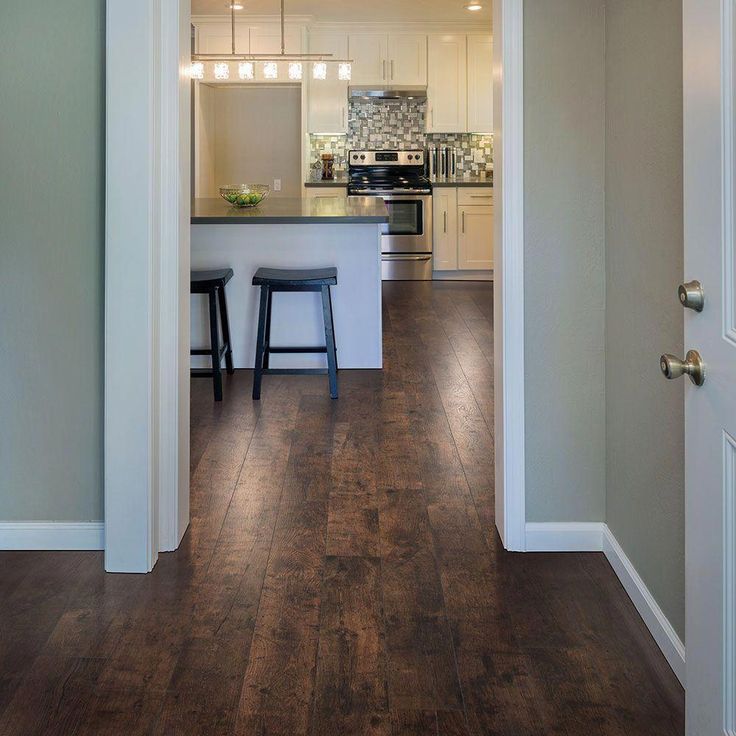 These puddles of moisture can be very damaging to the floor, and can even weaken its structural integrity—mostly because the water seeps through seams. Proper preparation of the subfloor to create a perfectly level and flat base is essential to preventing water damage on a hardwood floor.
These puddles of moisture can be very damaging to the floor, and can even weaken its structural integrity—mostly because the water seeps through seams. Proper preparation of the subfloor to create a perfectly level and flat base is essential to preventing water damage on a hardwood floor.
Lack of Moisture Barrier
Many hardwood floors are installed by nailing planks directly to the subfloor, which means that a traditional vapor barrier can't be used since the nails would puncture it. If moisture seeps down past the surface, it can get to the structural components of the floor and start eating away at the subfloor and underlayment. For this reason, hardwood flooring products that are installed with adhesives or click-together methods are better suited for a bathroom setting.
Flooding
Flooding is a constant threat in a bathroom, but the dangers are exacerbated when you have hardwood flooring. If a pipe starts to leak or a fixture malfunctions, you can very quickly find the bathroom filled with inches of water.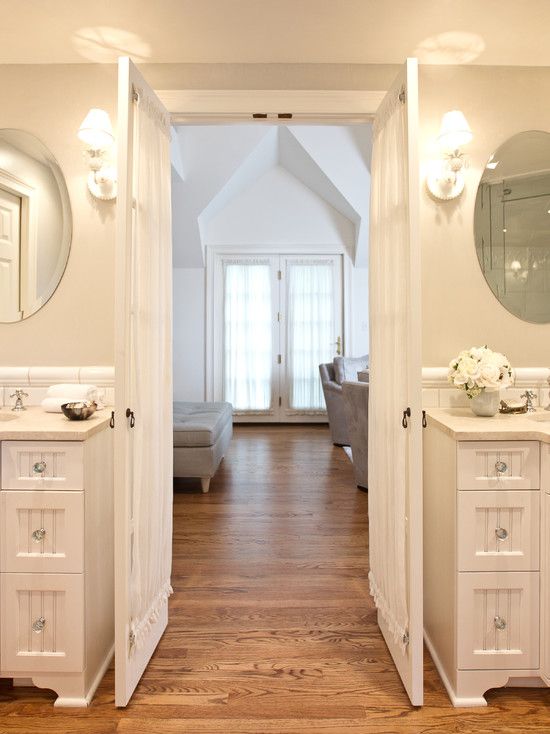 Though you may be able to undo some of the damage, flooding will generally destroy a hardwood flooring installation, even if it is properly sealed. Almost no hardwood floor can seal against a complete flood. In a home with old plumbing, you should think carefully before risking a hardwood floor in kitchens or bathrooms.
Though you may be able to undo some of the damage, flooding will generally destroy a hardwood flooring installation, even if it is properly sealed. Almost no hardwood floor can seal against a complete flood. In a home with old plumbing, you should think carefully before risking a hardwood floor in kitchens or bathrooms.
Chemical Staining
There are many different types of soaps, cleansers, and body products that are used in bathrooms. Many of these are slightly acidic in nature, and if they spill and splatter on hardwood, they can eat away at the finish or cause permanent staining in the wood. Cleansers will need to be cleaned up quickly and thoroughly if they get on hardwood flooring.
High Humidity
While standing water caused by splashing gets the most attention in a bathroom, the humidity in this space can be just as damaging. When you shower, the bathroom tends to get very steamy, with the air growing warm and moist. This air will hover in the space, filling every crack, penetrating down into every tiny space, infiltrating the hardwood floors. While only a small amount will actually get in, over time, the effects can accumulate.
While only a small amount will actually get in, over time, the effects can accumulate.
Unfortunately, humidity can attack every side of the hardwood—even the bottom, which generally does not get a finish treatment. In the case of a heavily used bathroom, humidity can result in floorboards twisting, warping, plumping and cracking.
Bathrooms with hardwood flooring should have good exhaust fans, which should be run for a good length of time during and after a shower or bath.
Mold and Mildew
Because the bathroom is so moist, the growth of mold and mildew is always going to be a problem. These harmful organic substances love hot, wet environments, and they feed on natural organic materials such as hardwood. The finishing coating will protect the floor to some extent, but over time, mold and mildew can grow in between boards, and even beneath them. Mold and mildew are problems whenever they occur, but they can be quite serious for people who have allergies and sensitivities.
Strategies for Preventing Damage to Hardwood
Tactics are aimed mostly at preventing moisture from contacting the wood, and especially from seeping down through the seams to the subfloor.
Regular Maintenance
Keeping the floor's finish layer strong and intact is vital when you have hardwood flooring in a bathroom. This is your first line of defense, and it will need to be reapplied every few months. You can test if the finish layer is still intact by dropping a small amount of water on it and waiting to see if the water beads up or is absorbed into the wood. If it beads up, the finish is fine, but if it sinks in, then you need another topcoat of finish as soon as possible. Pay particular attention to cracks between floorboards.
Use Bath Mats
These can be placed at strategic locations, such as just outside of the bathtub or around the sink. Catching any splashing water droplets or drips from wet freshly washed feet can prevent floor damage.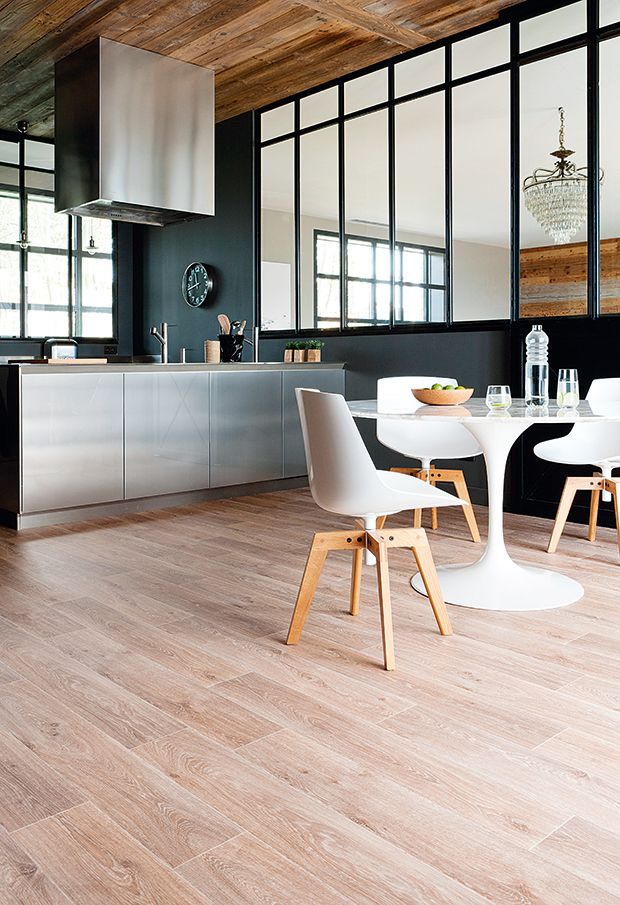 If a bath mat becomes saturated, make sure to air-dry it so it can't hold moisture against the floor. The best bath mats will have a solid rubber or vinyl backing that prevents moisture from passing through.
If a bath mat becomes saturated, make sure to air-dry it so it can't hold moisture against the floor. The best bath mats will have a solid rubber or vinyl backing that prevents moisture from passing through.
Install Tub and Shower Surrounds
Another way you can prevent water damage is to install surrounds along the perimeter of the bathtub. These can provide a stylish match with other features of the room, but the real merit is their ability to keep water in its place—which is not on your beautiful hardwood floor.
Also, keep the joints around shower stalls properly sealed, since this is a place where water can easily escape out onto hardwood flooring.
Maintain Plumbing Fixtures
The pipes running into and out of the major fixtures in a bathroom can also be a problem. These can sometimes leak, causing water damage problems in hard-to-see areas. Cold-water lines or the toilet tank may also collect condensation, due to being cooler than the surrounding air in the bathroom, and this can also lead to water issues as condensation drips down to the floor. The best way to handle this is to ensure that all pipe openings are thoroughly caulked and to keep an eye out for any leaks or drips. The valve connections beneath a toilet or pedestal sink are prime places where water can drip onto a floor.
The best way to handle this is to ensure that all pipe openings are thoroughly caulked and to keep an eye out for any leaks or drips. The valve connections beneath a toilet or pedestal sink are prime places where water can drip onto a floor.
Refinishing Hardwood Floors in a Bathroom?
One of the great things about hardwood is that if you mess up and ruin the floor, it can generally be fixed by simply sanding down the surface past the level of any defects and then applying a new finishing coat to it. Be aware, though, that the equipment normally used in other rooms to refinish hardwood is quite large and unwieldy. In many bathrooms, this will be done best with hand power sanders rather than large machines, and so the process may be harder and more time consuming than you first imagined.
Shopping Considerations
When deciding if hardwood flooring is right for your bathroom, consider these factors:
Finish
In its unprotected state, hardwood flooring will plump, expand, warp, and stain at the touch of any liquids, because wood is naturally a very absorbent material. However, the application of a finishing agent, usually a polyurethane-based sealer, can create an invisible surface over the wood, making it impossible (or at least difficult) for water to penetrate. This finish will generally have to be reapplied at regular intervals in a bathroom, with special attention to the seams, since this is where moisture is most likely to infiltrate.
However, the application of a finishing agent, usually a polyurethane-based sealer, can create an invisible surface over the wood, making it impossible (or at least difficult) for water to penetrate. This finish will generally have to be reapplied at regular intervals in a bathroom, with special attention to the seams, since this is where moisture is most likely to infiltrate.
It is very important that you choose a quality finish that is designed for water-heavy environments. There are some finishes that are marine-grade, suited even for outdoor all-weather applications. Others will be acceptable for indoor use in damp spaces, though not fully waterproof. You also have to be aware that the sealer will only protect the top of the material; any water that penetrates down through the seams can cause damage to the wood from the sides and below.
Type of Wood
There are many different types of wood that are available for flooring installations, and some will be better than others at handling bathroom conditions.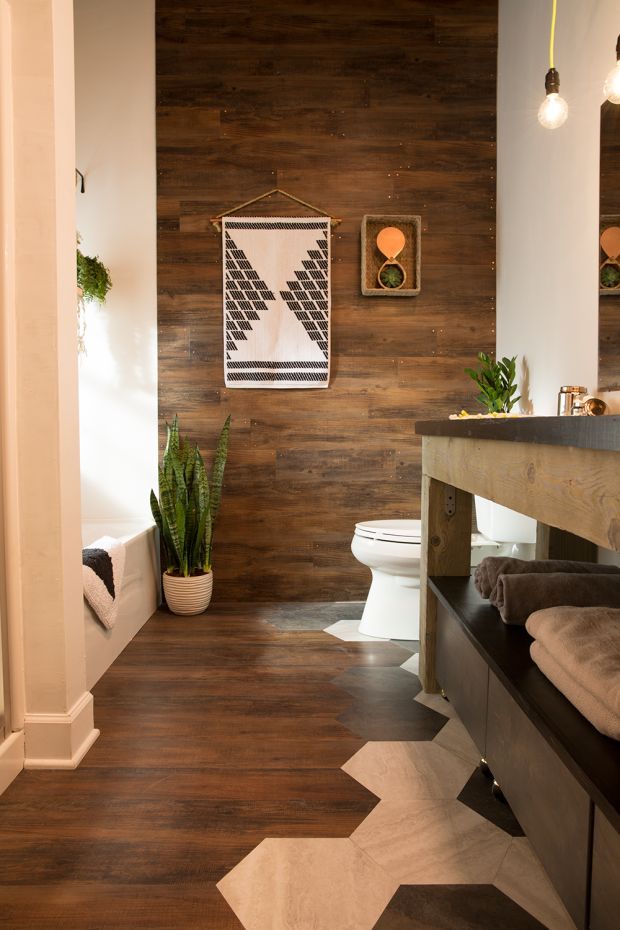 Generally, you should avoid softwoods such as pine and fir, as they will be less dense and more apt to absorb moisture. Good hardwood choices include teak, oak (especially white oak), cedar, cherry, maple, ash, walnut, and hickory.
Generally, you should avoid softwoods such as pine and fir, as they will be less dense and more apt to absorb moisture. Good hardwood choices include teak, oak (especially white oak), cedar, cherry, maple, ash, walnut, and hickory.
Warranty
Most hardwood flooring will come with a set warranty that will guarantee replacement over a certain period of time if the material fails. However, these warranties often come with stipulations that void them if the floor is installed in a water-heavy environment, such as a bathroom. Or they may define the flooring as "moisture-resistant," which usually means that you are expected to wipe the flooring dry immediately after condensation or spills contact the surfaces. Your warranty is voided if you fail to do this, and wood floors are never warranted against flooding. Always read the product literature carefully if you plan to install wood flooring in a bathroom or other damp area.
Consider the Usage
Hardwood may not be the best flooring choice in a heavily used bathroom where children will splash around, but it can be perfect in a guest bath or powder room that contains only a vanity, and where there's little chance of water puddling on the floor.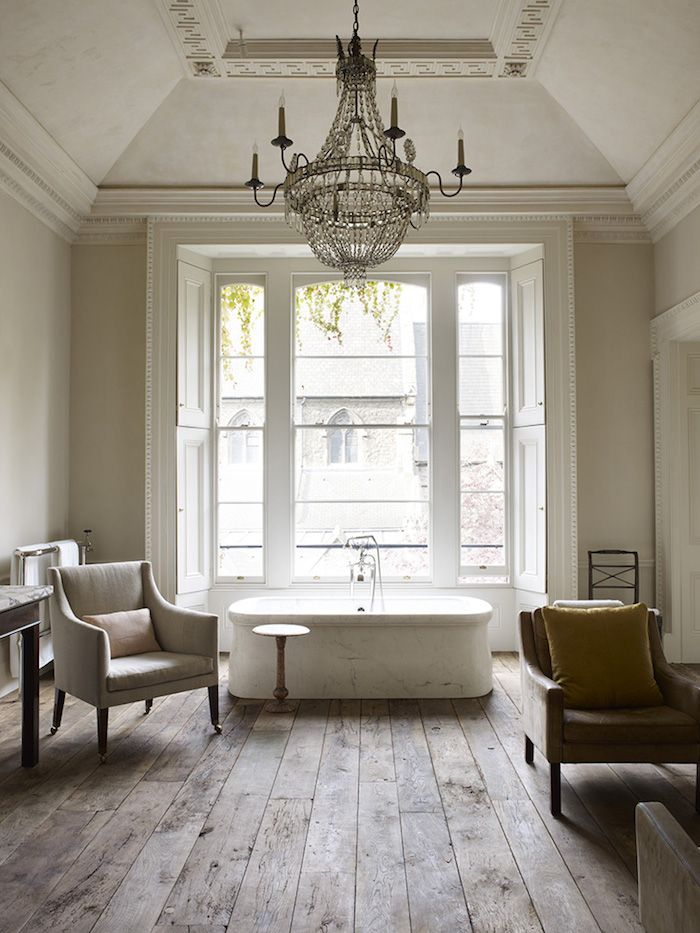 Unless you're up to the task of diligent maintenance, you may want to reserve hardwood flooring for bathrooms where it is most appropriate.
Unless you're up to the task of diligent maintenance, you may want to reserve hardwood flooring for bathrooms where it is most appropriate.
15 Ideas for Wood Floors in Bathrooms
By
Anabelle Bernard Fournier
Anabelle Bernard Fournier
Anabelle Bernard Fournier is a freelance writer who specializes in home decor and interior design. She's been writing about interiors since 2012 and focuses on bathroom design and personalizing a home.
Learn more about The Spruce's Editorial Process
Updated on 07/12/21
dreamtimestudio / Getty Images Installing wood flooring in bathrooms used to be considered a big no-no. Splashing, standing water, and even high humidity would damage and warp the material, making it useless in a short amount of time. Has this all changed with new treatments available for wood flooring? Many people now argue that polyurethane coatings and prefinished hardwood flooring is far more resistant to water damage than before, and some argue that some hardwood flooring is actually waterproof.
Not so fast. The reality is that nearly all hardwood flooring manufacturers still advise caution when it comes to using their flooring in bathrooms and other wet areas. It's true that good oil-based polyurethane sealers and careful attention to sealing cracks between flooring boards can make hardwood flooring perform adequately in a bathroom, but virtually no flooring manufacturer will ever describe a hardwood flooring product as waterproof. The best you can get is a tentative description of the product as being water-resistant, and then only if you carefully follow use-and-care instructions. For example, a flooring manufacturer may honor a warranty for a moisture-resistant hardwood floor only if standing puddles are thoroughly mopped up and dried within minutes. Read manufacturer's literature carefully if you are considering natural wood flooring for a bathroom.
Some things to consider when it comes to using hardwood flooring in a bathroom:
- Hardwood will take much more care and maintenance in a bathroom than elsewhere in your home—at the very least, a yearly application of a finish designed for wet environments.
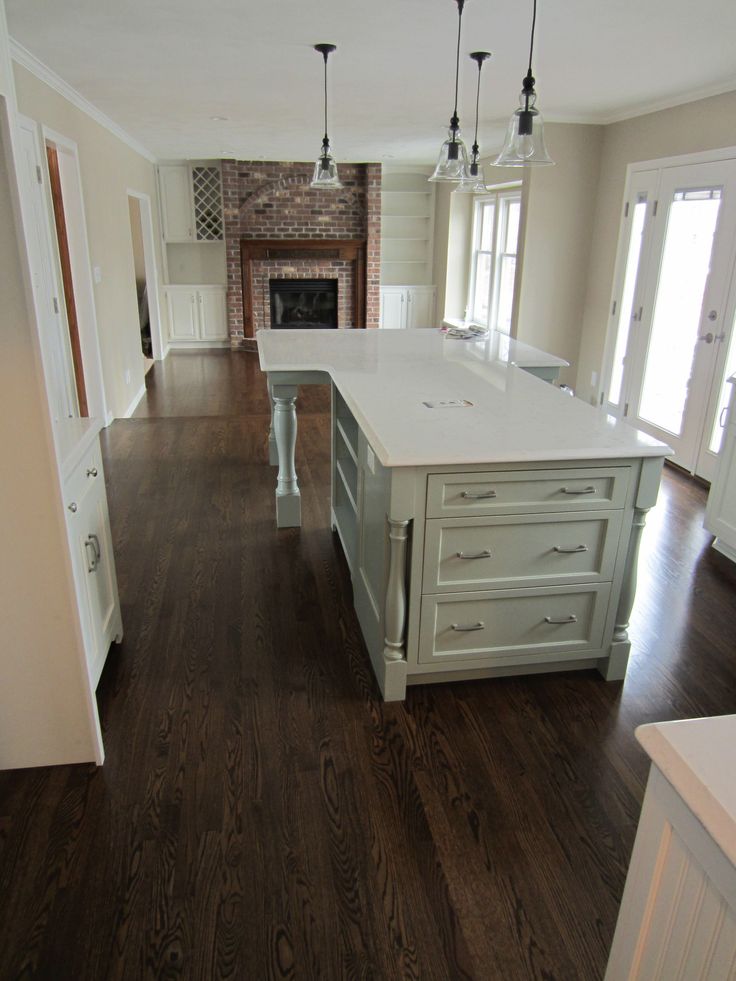
- Manufacturers often challenge warranty claims on wood flooring in a bathroom—and some flooring products may expressly say they are not suitable for bathrooms.
- Any and all splashed and spilled water must be mopped up and dried immediately—even if you think you have waterproofed the floor with sealer.
All that being said, modern polyurethane sealers, combined with more robust exhaust vent fans that can dry a bathroom much quicker, mean that wood flooring can be often used in today's bathrooms. They are still perhaps a poor choice for family bathrooms with bathtubs used by children, but for powder rooms that feature only a sink, for guest bathrooms that aren't used often, and for a primary bathroom where you are willing to put in the effort to maintain the floor, a good hardwood floor can be a wonderful design element.
About This Term: Primary Bathroom
Many real estate associations, including the National Association of Home Builders, have classified the term "Master Bedroom" (or "Master Bathroom") as discriminatory. "Primary Bedroom" is the name now widely used among the real estate community and better reflects the purpose of the room.
"Primary Bedroom" is the name now widely used among the real estate community and better reflects the purpose of the room.
Read more about our Diversity and Inclusion Pledge to make The Spruce a site where all feel welcome.
For many people, the style benefits are worth the risks. Wood is warm, stylish, and beautiful. If you're not a big fan of the cold, clinical look that's common for bathrooms, then wood will certainly suit your tastes. Hardwood floors come in different colors and styles, making it a perfect choice for a variety of decor projects.
But Consider Alternatives
If you are still uneasy about using wood in a bathroom (and there is ample reason to be cautious), you may want to consider porcelain tile or luxury vinyl planking, both of which can look remarkably like natural wood. And these are no second-best alternatives—quality porcelain and luxury vinyl are high-end flooring materials you can be proud to display. And they are virtually immune to damage from moisture and standing water. Virtually all the designer bathrooms you will see in the following examples could be accomplished with porcelain tile or luxury vinyl—and the difference would be very hard to spot.
Virtually all the designer bathrooms you will see in the following examples could be accomplished with porcelain tile or luxury vinyl—and the difference would be very hard to spot.
-
01 of 15
Reclaimed Wood Floor with Gray Subway Tile
Interior TherapyThis retro bathroom by Interior Therapy features a reclaimed wood floor that adds to the aged style of the space. It adds warmth in contrast to the cooler grey subway tile and modern frameless shower, bringing a wonderful balance to the whole.
-
02 of 15
Dark Wood Floor In a Contemporary Powder Room
AMW Design StudioThis colorful powder room by AMW Design Studio uses wood flooring to add organic warmth to a surprisingly effective yellow croc-skin wallpaper.
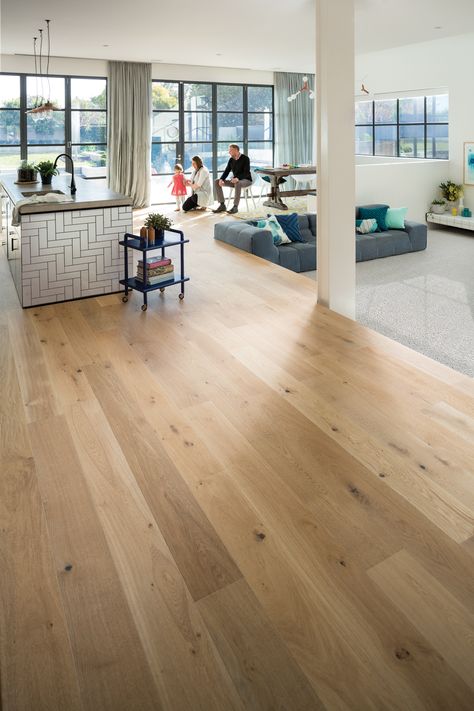 The combinations of metal and wood, ceramic and fabric, and yellow and blue are perfectly balanced to avoid visually overwhelming the space.
The combinations of metal and wood, ceramic and fabric, and yellow and blue are perfectly balanced to avoid visually overwhelming the space. The wood floor is the secret to making this space work. By adding something natural and organic, the bathrooms look accessible and welcoming, rather than shocking and alienating.
-
03 of 15
Luxury Bathroom With Dark Wood Flooring
Tracery InteriorsDark, espresso-stained flooring contrasts the whiteness of this luxurious primary bathroom by Tracery Interiors, and contributes to a chic Gothic style, along with the decorative screen and chandelier. A high, peaked ceiling makes this bathroom especially expansive.
The high-gloss finish on flooring this dark provides a look similar to that of natural stone. This look both reinforces the Gothic style while offering a contrast with the matte, fabric-look wallpaper.
-
04 of 15
Wood Slats in a Wet Room Bath
AlsoCAN ArchitectsThis gorgeous modern bathroom by alsoCAN Architects uses a wood slat floor to seamlessly integrate a shower in a wet-room space.
 The water goes between the slats to a drainage tray underneath. The medium-dark shade has an Asian feel to it, like something you'd find in a Bali spa. The rest of the design is minimal and functional, yet warm and inviting.
The water goes between the slats to a drainage tray underneath. The medium-dark shade has an Asian feel to it, like something you'd find in a Bali spa. The rest of the design is minimal and functional, yet warm and inviting. Such usage requires a wood that can accept frequent soaking, such as oil-treated teak or redwood.
-
05 of 15
Open-Concept Bathroom With Wood and Marble Floor
Studio DBThe white oak flooring betrays the Scandinavian inspiration for this bathroom by Studio DB. This high ceiling, open-concept space is perfect for those who enjoy a quiet, relaxing time in their bath while enjoying a great view. The hex marble tile is an especially stylish touch that beautifully contrasts with the brass plumbing hardware.
-
06 of 15
Primary Bathroom With Classic Wood Floor
Lorraine G. ValeThere's nothing like a traditional primary bathroom with a classic, medium-tone hardwood floor. This space by Lorraine G.
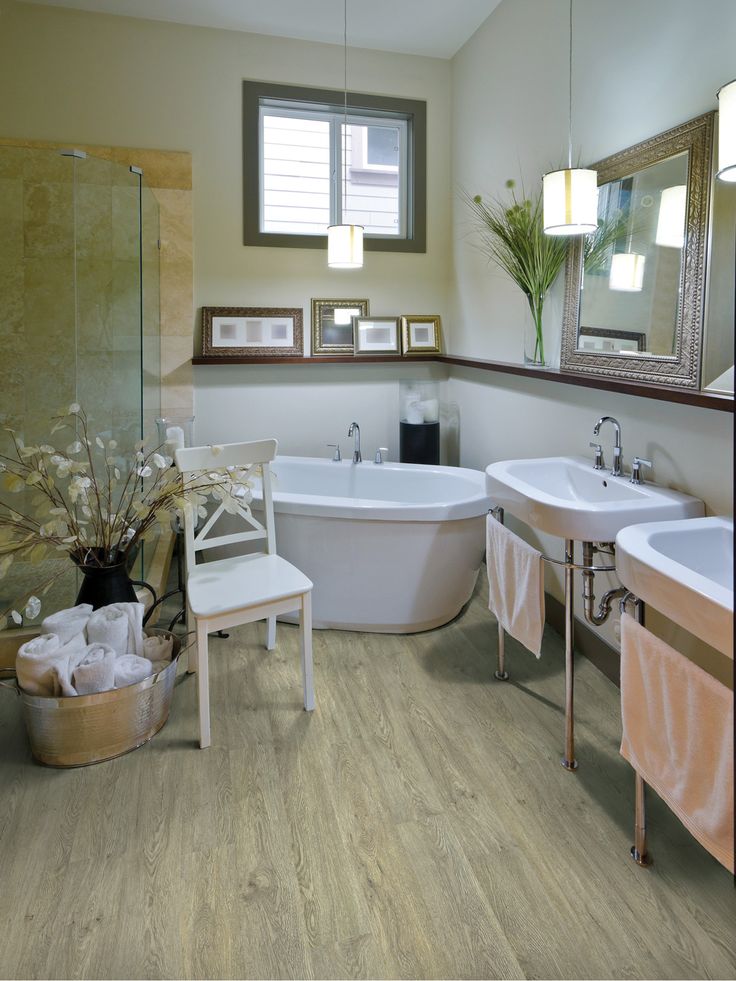 Vale gets everything right: the white and beige paint, the pedestal tub, the marble countertop, and the double sink. The warm, welcoming glow of a hardwood floor brings it all together to make for a relaxing space. In a space where both showering and bathing occur, take care to protect wood floors against standing water.
Vale gets everything right: the white and beige paint, the pedestal tub, the marble countertop, and the double sink. The warm, welcoming glow of a hardwood floor brings it all together to make for a relaxing space. In a space where both showering and bathing occur, take care to protect wood floors against standing water. -
07 of 15
Rustic-Style Bathroom with Nailed-Plank Flooring
Kathryn Scott Design StudioA clawfoot tub set on a retro, nailed-plank wood floor sets the tone for this rustic yet cozy bathroom by Kathryn Scott Design Studio. The Roman shade and antique silver mirror add elegance to this cozy space. The darker shade of wood contrasts with the white and gray that predominate the space and provides the natural touch that works so well in farmhouse-style rooms.
12 Rustic Bathroom Ideas You Will Love
-
08 of 15
Eclectic Bathroom With Diamond-Pattern Wood Floor
Kasey Buick via HouzzThis cool bathroom floor is made up of wood planks stained in a diamond pattern.
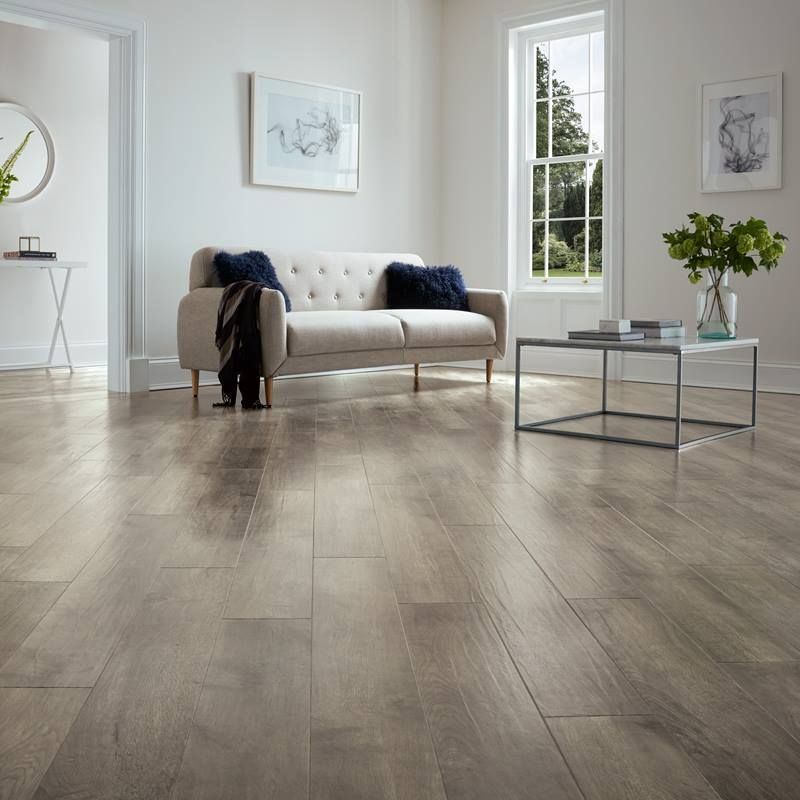 This might be an interesting, challenging DIY project for motivated home renovators. Designer Kasey Buick also included a few antique mirrors and traditional light fixtures to finish the look. Not all wood floors have to feature straight planks and traditional designs!
This might be an interesting, challenging DIY project for motivated home renovators. Designer Kasey Buick also included a few antique mirrors and traditional light fixtures to finish the look. Not all wood floors have to feature straight planks and traditional designs! -
09 of 15
Bathroom With Fireplace and Matte Wood Floor
Carden CuniettiNothing feels more luxurious than reading a book in the tub under the light of a fireplace. This primary bathroom by Carden Cunietti features not only a classic brick fireplace, but also a wonderful matte espresso wood floor that contrasts against the white paint, tub, and sink. The visible veining on the marble makes for an interesting texture, too.
-
10 of 15
Black Tub and Herringbone Wood Planks
Gonterman ConstructionBlack tubs are not usual, but against a white painted brick wall and light wood herringbone floor, it is stunning. This bathroom by Gonterman Construction features lots of natural light and open, uncluttered space.
 A white Roman shade provides privacy when needed.
A white Roman shade provides privacy when needed. A custom herringbone plank floor like this will require a lot of attention to keep it water-resistant.
-
11 of 15
Contemporary Primary Bath With Wood Floor Pedestal
Mark Jordan Architecture & DesignHere, a freestanding tub rests on two large wooden beams in the same shade as the retro wood plank flooring underneath it. The mix of old and new in this bathroom by Mark Jordan Architecture & Design is a wonderful way to add personality and style. The wood tones of the flooring are echoed by the room trim and picture moldings.
-
12 of 15
Modern Bathroom With Light Wood Floor
Kim Lewis DesignSave space in a smaller bathroom by setting a tub across a corner rather than along a wall. This bathroom by Kim Lewis Designs has plenty of personality, created by the hanging terrarium, green ladder, and light wood floor. A wood plank of the same shade serves as a tray over the tub for a book and a glass of wine.
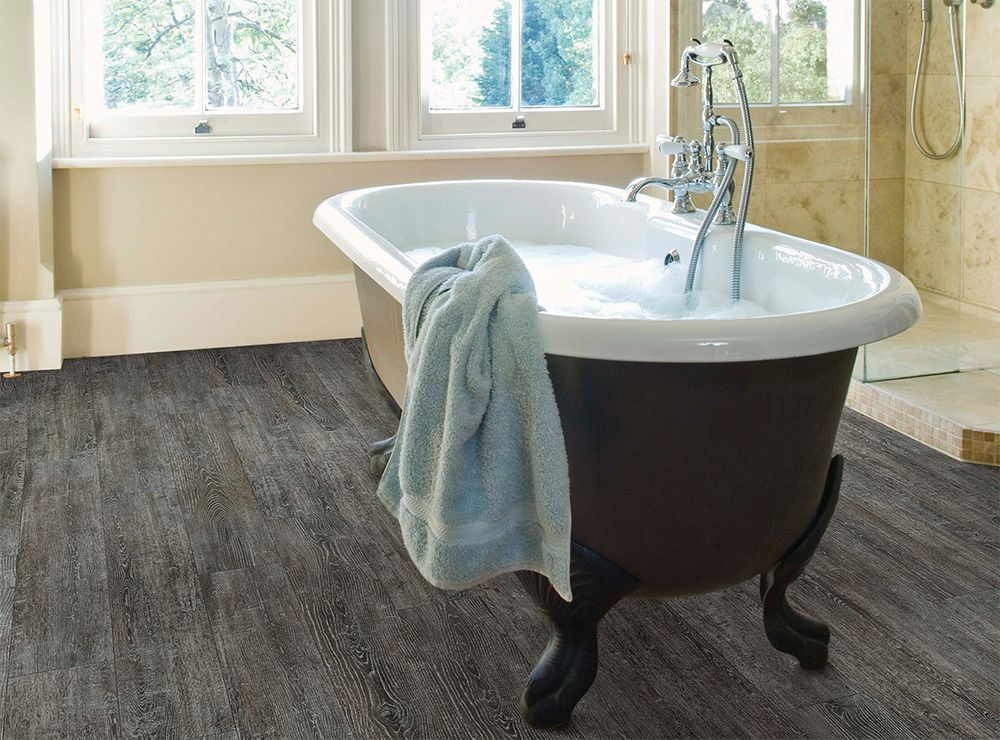
-
13 of 15
Shabby Chic Bathroom With Wood Plank Flooring
LAIR Architectural + Interior Design PhotographyThis bathroom by Key Residential really adds the "chic" to "shabby chic," with prefinished wood plank flooring, distressed wood wall decor, and a freestanding tub painted to look like oxidized copper. That wooden separator screen pulls the whole together by providing privacy and adding style to the space.
Prefinished wood flooring planks can be especially tricky to use in a bathroom. Note the beveled edges, which can collect standing water unless spills are immediately soaked up.
-
14 of 15
Eclectic Powder Room With Herringbone Floor
Jennifer Bunsa Design StudioIn this quirky design by Jennifer Bunsa, a kitchen cabinet is repurposed to a bathroom cabinet, and a unique lotus flower light fixture provides an unusual accent. The herringbone wood floor ties everything together by recalling the cabinet and wall beams.
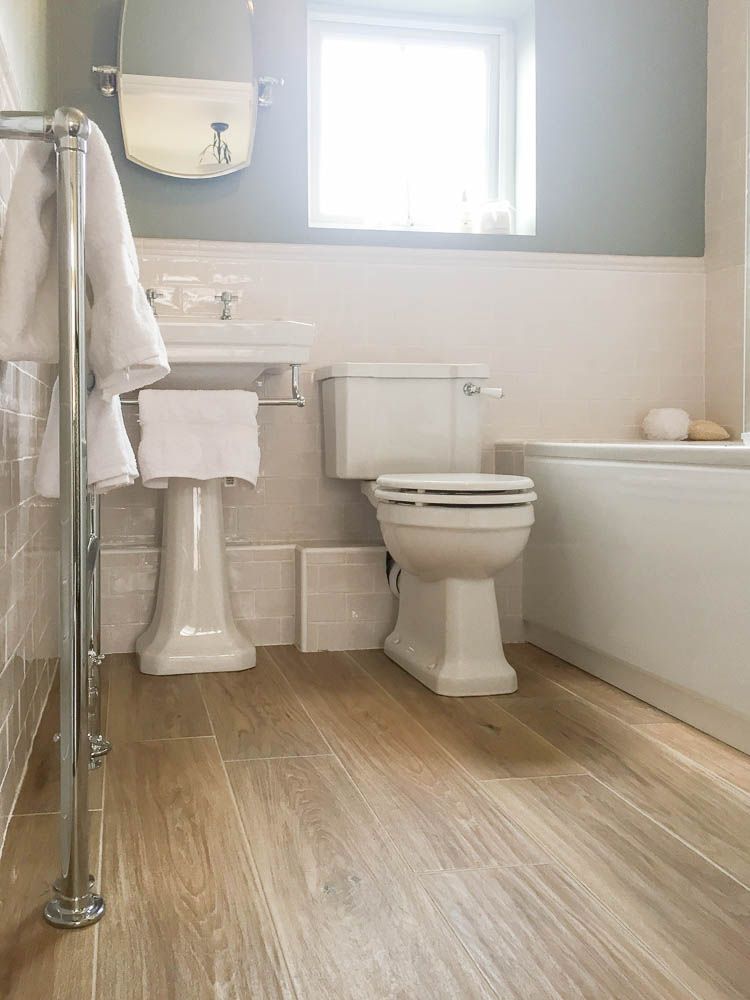 Two rugs keep your feet warm on a cold winter morning.
Two rugs keep your feet warm on a cold winter morning. -
15 of 15
Wood-Look Porcelain?
LeivarsThis small bathroom with white subway tile uses what appears to be a distressed wood flooring. However, notice how the flooring covers the entire shower floor. This is a perfect example of how porcelain tile can convincingly look like natural wood. In this space by Leivars, the distressed "wood" floor adds a touch of retro love, which is enhanced by the classic beveled subway tile.
Engineered Wood vs. Solid Wood Flooring Comparison Guide
Floor in the bathroom: TOP 6 current floor coverings
The floor in the bathroom is exposed to heavy regular loads, but unlike other rooms in the apartment or house, this is not abrasive wear or UV exposure. High humidity with sudden changes, poor ventilation, high temperatures, direct contact with water - these are the daily tests for flooring in the bathroom. That is why our rating includes only those finishing materials that have the necessary technical characteristics, design value and at the same time are quite comfortable in everyday use.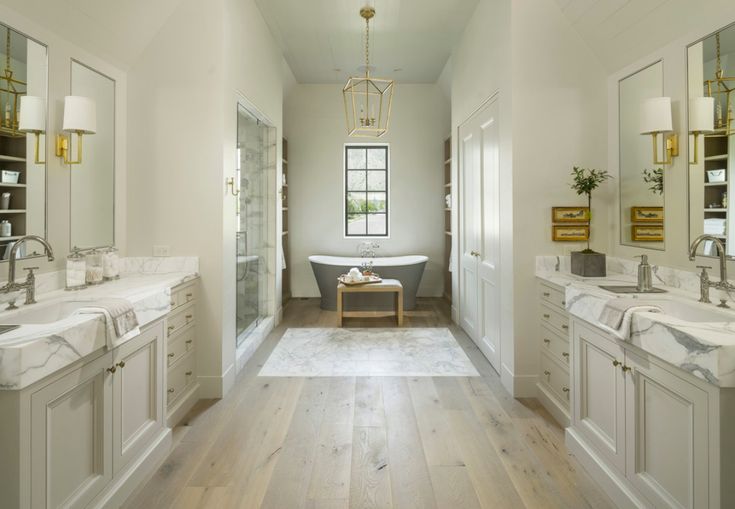
Water resistance, moisture resistance and water resistance is absolutely essential for bathroom flooring: that is why budget HDF-based laminate and linoleum are not included in the rating. No matter how the edges and the wood base of the laminate are processed, with constant changes in humidity and temperature, the planks will inevitably deform. Linoleum itself is 100% moisture resistant, but it is very difficult to ensure water resistance: water penetrates under the floor, the screed gets wet and moldy from constant dampness.
Vinyl flooring
► Select a vinyl floor from the catalogue.
Interlocking and especially adhesive vinyl flooring is designed and recommended for finishing bathrooms, showers and WCs. 100% waterproof, stable, easy to install, wall finishable, hygienic, easy maintenance, optimum thermal conductivity, design value (hundreds of wood or stone decors). In addition, the embossed polyurethane top layer provides an anti-slip effect even when wet.
Vinyl tiles are available in a variety of substrates that affect the performance of the flooring:
- Quartz vinyl tiles. Multilayer structure filled with quartz sand (up to 80%). For stabilization, PVC layers, fiberglass and fiber optics are used. Quartz vinyl tiles are flexible and very thin, so the installation requires an extremely even base, without drops. Quartz vinyl is available in lock and glue types: all types are suitable for the bathroom.
- Rigid Vinyl. The thickened basis of the increased density (1000-1100 kg/m3) from composite material or pure PVC. Due to this, the Rigid plank is less elastic, the thickness is increased by 2-3 times: some unevenness of the base is compensated, laying is allowed not only on the screed, but also on old floors (smooth, stable and clean).
- WPC. Composite board based on wood flour with foaming agent, PVC and calcium carbonate. In terms of density, WPC is identical to Rigid, but inferior in stability: that is why the vinyl layer is additionally integrated into the structure.
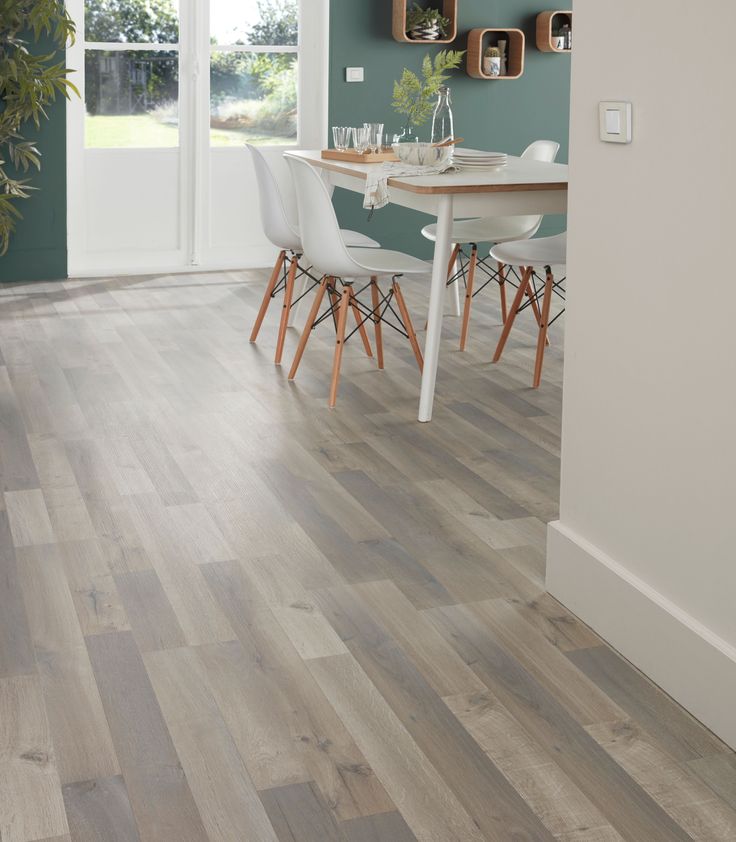 Vinyl WPC is the least suitable choice for a bathroom due to its high content of shredded wood.
Vinyl WPC is the least suitable choice for a bathroom due to its high content of shredded wood. - SPC laminate. In 2019, SPC (Stone Polymer Composite) laminate has rapidly entered the market, which, in fact, is a compressed stone. Rigid mineral base with a density of 2000-21000 kg/m3 consists of only two components: PVC (25-30%) and calcium carbonate (70-75%). The perfect combination for waterproof, hard and impact resistant flooring with increased tolerances for uneven substrates and full compatibility with all underfloor heating systems. SPC tiles, although available only in a lock version, are also recommended for use in the bathroom, kitchen or balcony.
Vinyl tiles, especially quartz vinyl and SPC laminate, are a universal choice not only for the bathroom, but for all areas in the apartment: if desired, a stable floor covering can be laid in a single contour without gaps and thresholds!
Porcelain stoneware
Ceramic tiles and denser porcelain tiles are the default choice for bathrooms and kitchens. This is due to the fact that before the advent of vinyl coatings, in the economy and middle segment, porcelain stoneware was, in fact, the only solution for rooms with difficult operating conditions, which include the bathroom.
This is due to the fact that before the advent of vinyl coatings, in the economy and middle segment, porcelain stoneware was, in fact, the only solution for rooms with difficult operating conditions, which include the bathroom.
However, porcelain stoneware is far from perfect:
- The surface is slippery when wet. Even the embossed surface.
- Heated floor required. Porcelain stoneware has a very high thermal conductivity, transfers the cold of the concrete screed.
- Medium impact resistance. Dropping a heavy object can break ceramic tiles.
- Expensive styling. The generally accepted norm is that the cost of laying is equal to the cost of porcelain stoneware.
- Difficult to cut. A tile cutter is required, curvilinear cutting is not feasible.
- Blackened seams. Due to insufficient ventilation, mold appears on the seams. Requires regular processing.
A whole bunch of shortcomings is partially offset by low cost, but in total it is obvious that porcelain stoneware is much inferior to vinyl tiles when choosing a bathroom floor.
A detailed comparison of ceramic tiles and quartz vinyl.
Self-leveling floor
Can bathroom flooring be the focal point of a room? With self-leveling floors - no doubt! Gorgeous 3D installations of the underwater world or thematic images are fascinating. However, for every day, a strikingly realistic self-leveling floor can be tiring.
The performance characteristics of the self-leveling floor for the bathroom are impeccable, one of the shortcomings can be distinguished only by the complexity of installation: perfect alignment is required beforehand, only concrete screeds are suitable. In case of any mechanical damage, the possibility of repair is not provided.
Cork floor with adhesive
► Select the cork floor from the catalogue.
Natural cork bathroom flooring is an unpopular solution due to the mass of myths surrounding cork flooring. Glue cork is great for finishing the floor and walls, not only in the bathroom, but even directly in the shower.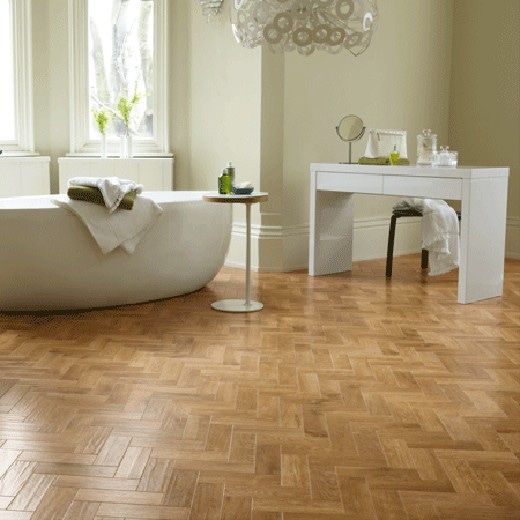 Another thing is that cork coatings are quite expensive, and laying requires a perfectly even base and varnishing in 3 layers after gluing the sheets. Is it worth the effort natural finish in the bathroom? Everyone decides for himself.
Another thing is that cork coatings are quite expensive, and laying requires a perfectly even base and varnishing in 3 layers after gluing the sheets. Is it worth the effort natural finish in the bathroom? Everyone decides for himself.
It is important to understand that only a glued cork floor is moisture resistant, the structure of which is exclusively compressed cork, without HDF base.
Exotic wood flooring
It would seem - how could a wooden floor get into the ranking of the best bathroom flooring? It's simple: we are not talking about traditional parquet or parquet boards made of oak and coniferous species, but about an array of exotic woods. Merbau, sucupira, teak, kumaru, zebrano, rosewood, as well as larch and cedar - materials are used for finishing luxury yachts: constant contact with water and high humidity only strengthen the wood structure. In addition, moisture and water do not destroy thermal wood: heat-treated lumber is also great in the bathroom.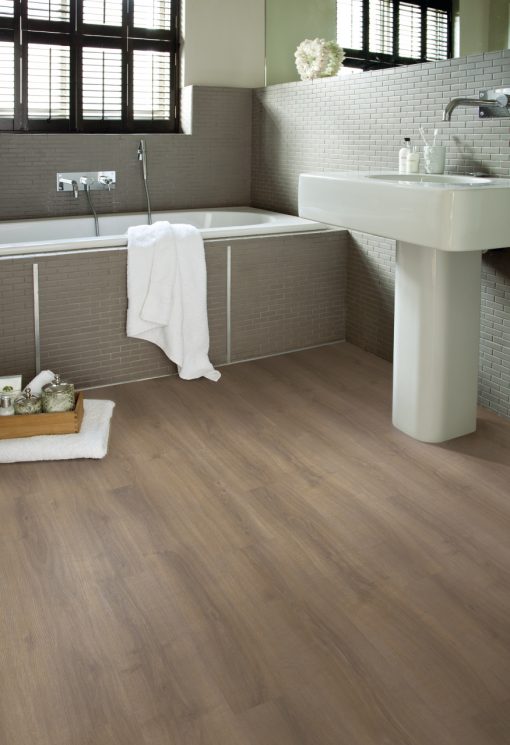
Natural stone
Like exotic wood finishes, marble, travertine, granite or other rock flooring is a premium solution. For natural stone, all the disadvantages of porcelain stoneware are true. Also to the minuses should be added the need for regular processing of the stone floor to preserve the original texture. All the difficulties more than compensate for the chic look of the bathroom floor made of natural stone.
We invite you to the Polov salons in Moscow and Odintsovo: see samples of bathroom flooring, ask related questions to managers, order accurate delivery!
Wooden bathroom floor
When choosing bathroom floor materials, many people don't consider wood at all. For many reasons, wood was not often used in this part of the house for decoration. Now, production technologies make it more resistant to moisture, which was the most important reason for refusing such a finish. Let's take a closer look at how a wooden floor will behave in a bathroom and whether it makes sense to use this material at all.
Why wood
There are many advantages to such a finish. Starting from the fact that the floor looks very beautiful and ending with the fact that it is easier to work with wood than with ceramic tiles or porcelain stoneware. However, it will be easier to list the advantages in order:
- Feelings - walking on plank flooring is much more pleasant than even on a heated ceramic floor.
- Heat retention - the thermal conductivity of wood is very low, due to which the air in the room will cool more slowly.
- Naturalness - nature has come up with a lot of different materials that are now used in the design of houses and wood will be one of the most popular.
- The ability to create a unique design - wood is easy to work with and allows you to show your creative skills when shaping the interior.
- Variety of colors and the ability to give the coating material the desired shade. It is enough to use a suitable varnish or stain.
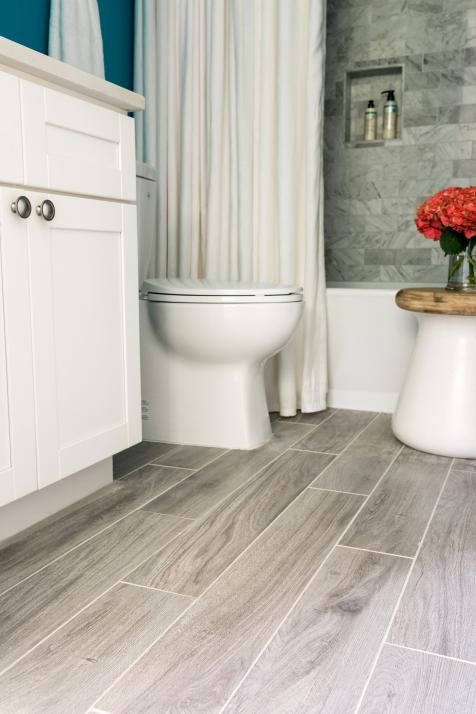
- Works great with all designer styles and finishes.
Despite the impressive advantages of wood, there are not as many disadvantages as many might think. The first is cost. Of course, the price of such a design will go beyond the average budget very much. Exclusivity and other advantages will easily cover this shortcoming. The second disadvantage is poor tolerance to water exposure. Here the problem is solved by special impregnations and the choice of a suitable type of wood.
Which species to choose
If you think about it, wood can still withstand the damaging effects of water. Suffice it to recall that earlier all ships were built of wood. Modernity has left not so many places where the tree comes into direct contact with water, but they exist - expensive yachts are still decorated with teak wood. It is teak that is most suitable for decorating floors in bathrooms, since it initially tolerates contact with water very well.
Its only drawback is the very high price.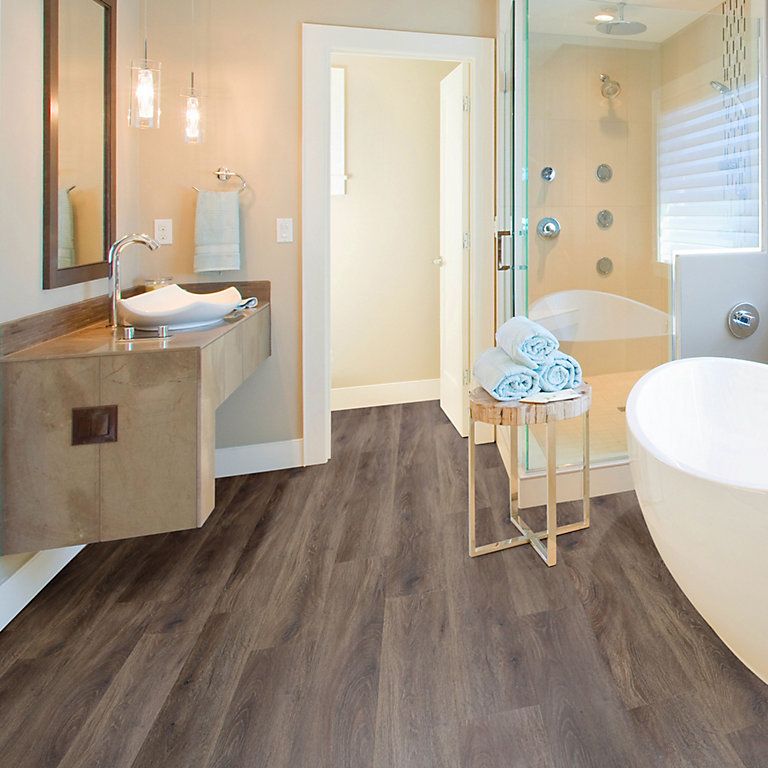 That is why teak decks remain the lot of expensive yachts and almost nowhere else have they become a traditional type of decoration. If the cost of a teak floor is high for you, then you can make a wooden bathroom floor from other species that cost less.
That is why teak decks remain the lot of expensive yachts and almost nowhere else have they become a traditional type of decoration. If the cost of a teak floor is high for you, then you can make a wooden bathroom floor from other species that cost less.
For example, elm or oak. They have a very beautiful pattern and after special processing are quite suitable for flooring. However, water still affects them strongly and puddles should be wiped up immediately. At the same time, even varnishing does not give a full guarantee of the preservation of the coating in its original form for many years. That's right - even wood that is not particularly resistant to water will serve you for many years if it is treated with impregnation and varnish.
Another suitable option is larch. It costs less than an oak plank, and water won't do anything to it for decades. At the same time, only not such a spectacular picture can be attributed to the minuses. But even without special treatments, a hardwood board easily tolerates direct exposure to water.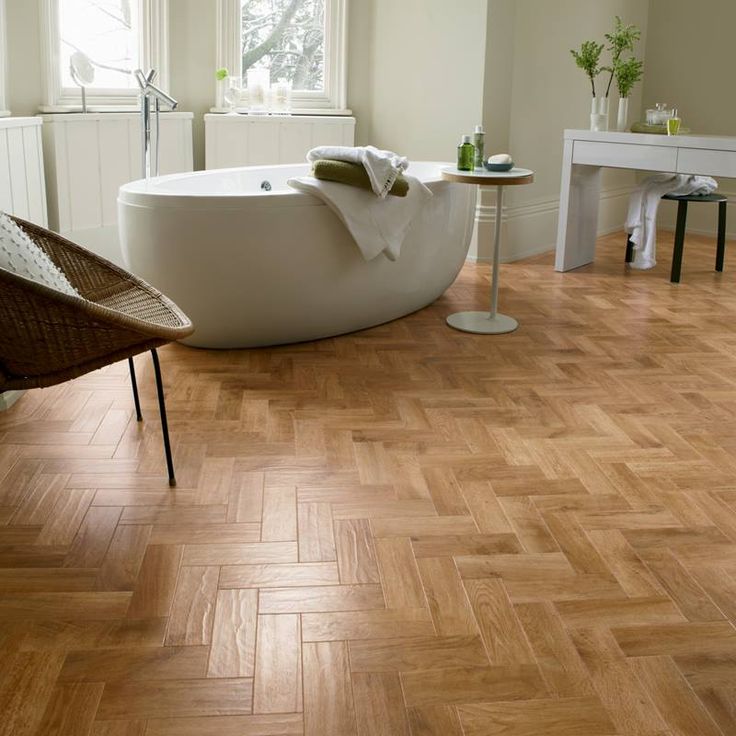 The famous Venice was built partly on deciduous piles and they have been holding for not even ten, but a hundred years.
The famous Venice was built partly on deciduous piles and they have been holding for not even ten, but a hundred years.
Things to consider
The technology for creating a wooden floor is always about the same and will not differ in anything special depending on the room. However, there are several other points that are equally important. If you are going to make a wooden floor in your bathroom in an apartment or a private house, you need to keep the following in mind:
- The costs always include not only the material itself, but also the appropriate impregnations, varnishes, stains, as well as materials for assembling the base on which the decking will be assembled.
- The surface of the floor will rise, compared to ordinary tiles - you can't just lay boards on concrete.
- Mandatory stage of work - complete waterproofing of the base. There are several material options here, but insulation is essential, as wood flooring may not hold water.
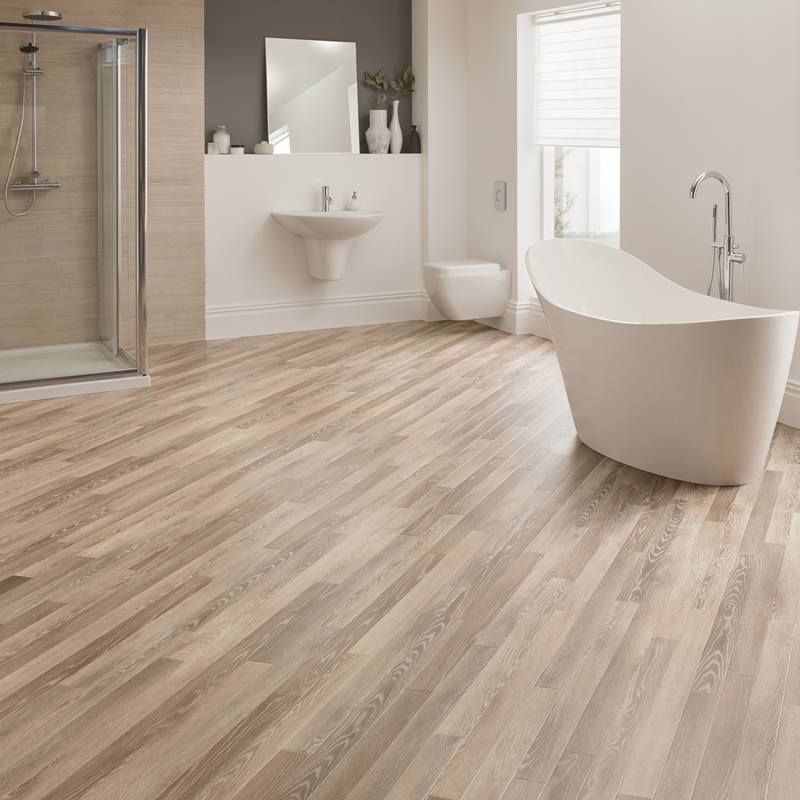
Learn more
